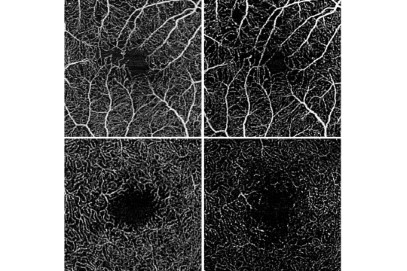New uveitis monitoring approach
A German research team found monitoring intermediate uveitis patients with optical coherence tomography angiography (OCTA) enables practitioners to better anticipate disease progression.
University Hospital Bonn and Bonn university researchers used the OCTA images of 52 patients with intermediate uveitis to calculate blood flow density of the central retina. They discovered an increase in disease activity was associated with a decrease in blood flow density, while a decrease in disease activity was associated with an increase in blood flow density.
Published in Scientific Reports, the study also showed impairment of retinal perfusion in intermediate uveitis was reversible and OCTA parameters were prognostic for future best corrected visual acuity and central retinal thickness.
Since intermediate uveitis is often associated with a long course of the disease and the need for immunosuppressive therapy, these data could help identify patients with a high risk of disease progression at an earlier stage, said study co-author Professor Robert Finger. "We could use this parameter as an endpoint in future randomised clinical trials to potentially generate better evidence for the treatment of this rare disease."


























